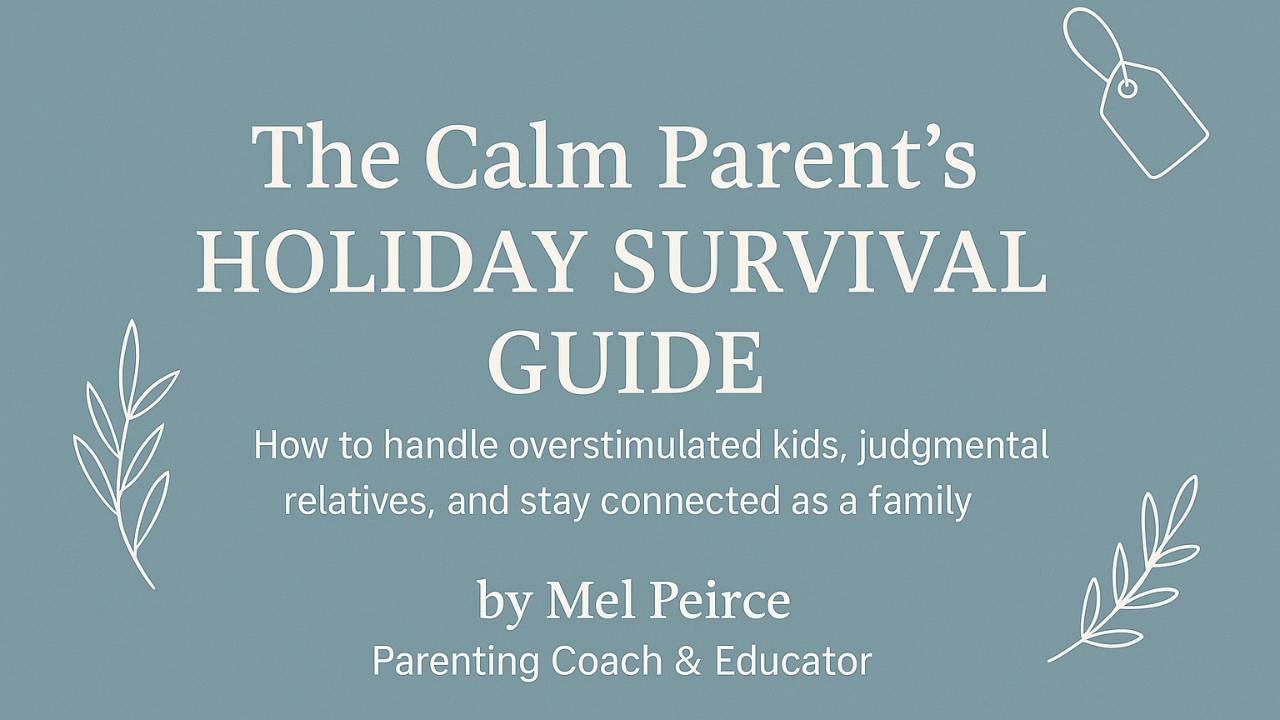When to Help Your Child, and When to Let Them Struggle
Oct 11, 2025
One of the hardest parts of parenting is knowing when to step in and when to step back. You see your child struggling, maybe with tying shoes, zipping a coat, building with blocks, or finishing a math worksheet, and your instinct is to help. You have the best intentions, and don’t want them to feel frustrated, and if we’re being honest - sometimes helping is just quicker and easier for everyone with way less drama.
But here’s the tricky part: if we always jump in, our kids don’t get the chance to practice the skills they need to build independence, confidence, and perseverance. On the flip side, if we never step in, our kids may feel abandoned or overwhelmed. The challenge for us as parents is finding the right balance of support.
Why Struggle Matters
Struggling isn’t a bad thing, it’s actually where learning happens. When kids wrestle with something that’s just a little beyond their current ability, they’re building focus, problem-solving skills, and resilience. Each time they succeed after struggling, their brain wires in confidence: “I can do hard things.”
But there’s a catch: what kids tell themselves while they’re struggling can make it easier or harder. As I explained in last week’s article, phrases like “I can’t” or “I don’t know” can actually shut down the problem-solving part of the brain. That’s why how we respond matters so much.
How to Know When to Help (and When to Step Back)
1. Check the Basics First
Kids can’t manage big feelings or focus well if they’re hungry, thirsty, or tired. Sometimes a snack, water, or short break is all they need before trying again.
2. Break It Down
Big tasks feel overwhelming. For a preschooler, “Get dressed” might need to be broken down into: “Put on your socks. Now your shirt.” For older kids, a whole project becomes smaller steps. Breaking things down makes success possible.
3. Offer the Right Kind of Support
Instead of taking over, try offering a little help to get them started. For example: “I’ll hold the zipper while you pull it up,” or “I’ll read the first problem with you, then you try the next one.” This keeps them in the driver’s seat while giving them just enough support.
4. Shift Their Thinking
Our brains are literal. When kids say “I don’t know” or “I can’t”, their brain takes that at face value and shuts down. You can help shift their mindset by asking questions that re-engage problem-solving:
“Ok, but what if you did know?”
“If you had to guess, where would you start?”
“What’s just one thing you could try?”
Example: I was on the phone with my son when he misplaced a tiny computer screw. He was frustrated, saying, “I can’t find it. I don’t know what happened to it.” I reminded him that since he hadn’t gone anywhere, it had to be close by, and encouraged him to think, “I know I can find it.” I barely had the words out of my mouth when he responded “Found it!”. His brain just needed the nudge to shift gears.
5. Let Natural Struggle Happen
If your child is frustrated but still making progress, resist the urge to jump in. Give them a chance to work it out. Struggling within reach of success is how perseverance grows.
Example: Preschoolers often say “I can’t” when faced with new skills like tying shoes or zipping jackets. If you step in too quickly, they lose the chance to discover they can. If you step back but encourage them, they often surprise themselves.
6. Step In When They’re Stuck
If your child is spiraling and crying, shutting down, or repeatedly saying “I can’t”, that’s a sign they need a reset. Step in with empathy, break the task down, or even suggest a quick break. Then encourage them to try again.
The Bigger Picture
Whether it’s a preschooler learning to pour their own milk, an elementary student tackling a tricky homework problem, or a teen facing a challenging course, our role as parents is to find that balance of support. Too much help can rob kids of the chance to learn; too little can leave them overwhelmed.
The sweet spot is what psychologists call the “zone of proximal development”, where a child is challenged but still has enough support to succeed. That’s where growth happens.
Parenting Tip:
Next time you’re wondering whether to step in or step back, ask yourself: Is my child making progress, even if it’s slow? Or are they truly stuck and need a little nudge?
When we give our kids room to struggle with the right support, we’re giving them the gift of resilience, confidence, and independence that will carry them far beyond childhood.
Want to add more strategies like these to your parenting toolbox? Join the free Confident Parenting Email Community to get exclusive weekly emails with practical tools, insights, and encouragement to help you parent with more confidence and connection. Click here to join.
Join the Confident Parenting Community.
Receive the latest tips and tools from the Confident Parenting Toolbox to support your kids
(and yourself!) with today's challenges so your whole family can thrive.
We hate SPAM. We will never sell your information, for any reason.


